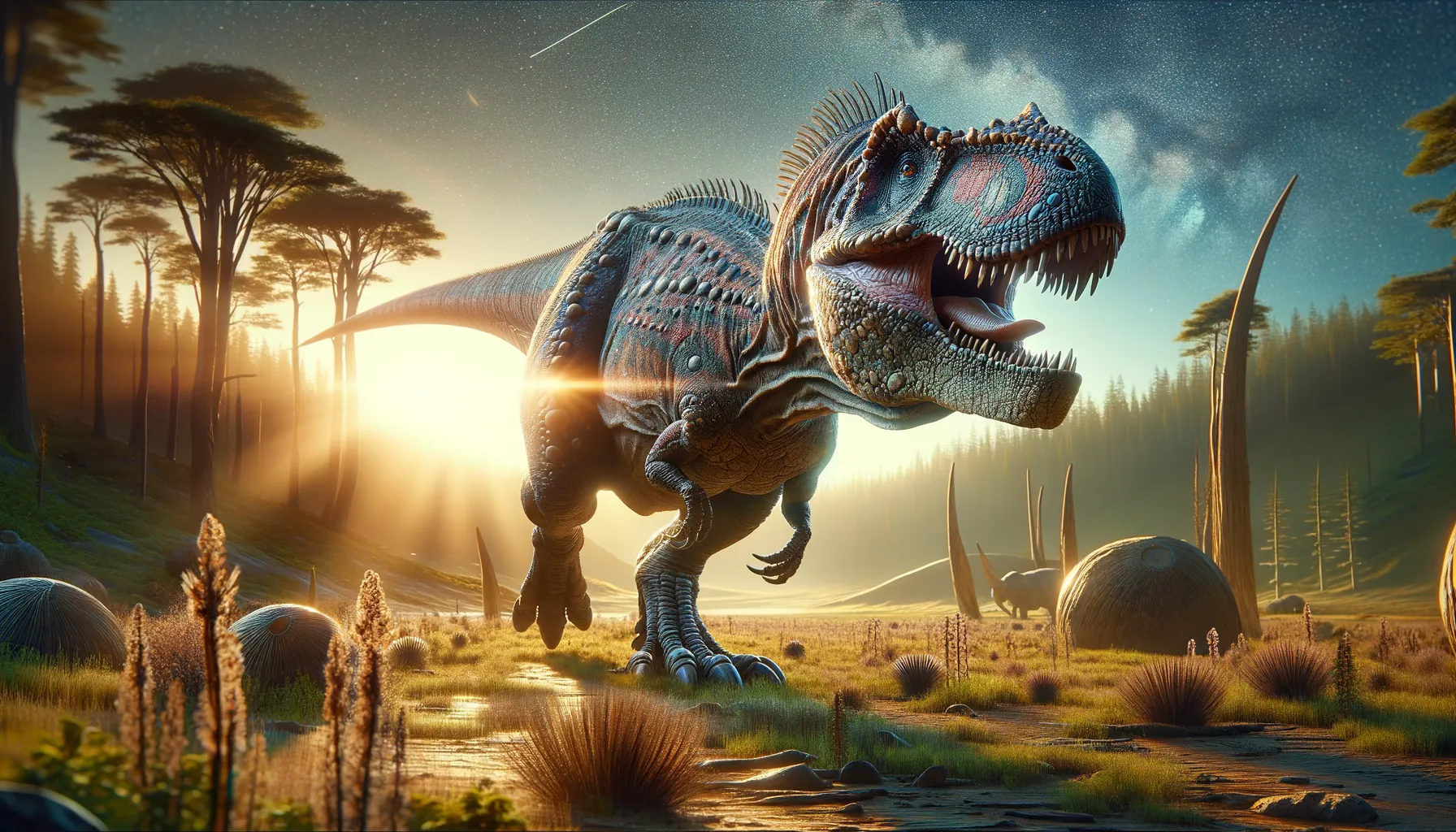
Ampelosaurus
Armored giant of the Cretaceous era.
Period
Cretaceous
Length
Estimated to reach about 15 meters long.
Height
Roughly 2.5 meters at the hips.
Weight
Estimated to weigh around 15,000 kilograms.
Ampelosaurus was a large sauropod dinosaur from the Late Cretaceous period, known for its heavily armored skin and unique bulb-like osteoderms. This herbivorous giant thrived in what is now Europe and is a significant find for scientists studying the diversity of sauropods in the region. Its fossils provide valuable insight into the ecosystems of the time and the evolutionary adaptations of sauropods.
Diet
Ampelosaurus was a herbivore, feeding primarily on the plants available in its environment. Its diet included a variety of ferns, conifers, and possibly flowering plants that flourished during the Late Cretaceous.
Hunting
As a herbivore, Ampelosaurus did not hunt for food. Instead, it likely spent a significant amount of time foraging for vegetation, using its long neck to reach higher foliage.
Environmental challenges
During the time of Ampelosaurus, the Cretaceous landscape was changing, with increasing volcanic activity and fluctuating sea levels. These changes would have impacted the availability of food resources. Adaptations to its size and armor may have been a response to predation risks from contemporary theropods. Climate variations could have also posed challenges, requiring efficient thermoregulation due to its large body size.
Speed
Ampelosaurus was a slow mover due to its large size.
Lifespan
It likely lived for several decades.
First discovery
Discovered in 1989 in France's Haute-Provence region.
Fun Facts
- Ampelosaurus was a sauropod dinosaur, known for its long neck and tail, that lived approximately 70 million years ago during the Late Cretaceous period.
- This dinosaur's name means 'vine lizard,' which refers to the vineyard-covered landscape where its fossils were first discovered in France.
- Ampelosaurus is notable for having armored plates, known as osteoderms, embedded in its skin, providing some protection against predators.
- It is estimated to have reached lengths of up to 15 meters (about 50 feet), making it a moderate-sized member of the sauropod family.
- Scientists believe that Ampelosaurus lived in what would have been a subtropical climate with lush vegetation, perfect for its herbivorous diet.
- The discovery of Ampelosaurus fossils has helped paleontologists understand more about sauropod diversity in Europe during the Late Cretaceous.
- Ampelosaurus is part of the titanosaur group of dinosaurs, which includes some of the largest land animals to ever exist.
Growth and Development
Ampelosaurus would have started life as an egg, likely laid in large nesting sites. Juveniles grew rapidly to minimize vulnerability to predators. As it matured, this sauropod developed its distinctive armor, which may have served as protection and possibly played a role in thermoregulation. Growth rates were influenced by environmental factors and resource availability.
Habitat
Ampelosaurus inhabited semi-arid environments with seasonal water sources. It roamed floodplains and riverine forests, where ample vegetation provided sustenance. Its habitat was a mosaic of open spaces and densely vegetated areas, ideal for a large dinosaur needing substantial amounts of plant matter. This environment supported diverse species, facilitating varied ecological interactions.
Interaction with other species
Ampelosaurus likely coexisted with other dinosaur species, including predatory theropods. It may have engaged in symbiotic relationships with smaller herbivores, benefiting from shared resources. Competition for food among large herbivores could have prompted migrations. Its formidable size and armor would have been a deterrent against carnivorous threats.
Natural lifespan
An individual could have lived up to 70 years in the wild given ideal conditions.
Reproduction
Ampelosaurus reproduced by laying eggs in nests, likely in communal nesting areas. Clutch sizes may have been large to offset the high mortality rates in juveniles. Parental care was minimal or absent, a common trait in large sauropods. The young had to fend for themselves shortly after hatching.
Social behaviour
Ampelosaurus may have lived in herds, providing safety in numbers from predators. Herding behavior would facilitate migration to new feeding grounds and offer protection to the young and vulnerable. Social structures were likely loose, with few defined roles apart from shared movement.
Fossil locations
Fossils of Ampelosaurus have predominantly been found in France, particularly in the region of Haute-Provence. These discoveries have helped scientists understand the diversity of European dinosaur fauna. Additional findings in surrounding areas have provided further context to its habitat and ecological role during the Cretaceous period.
